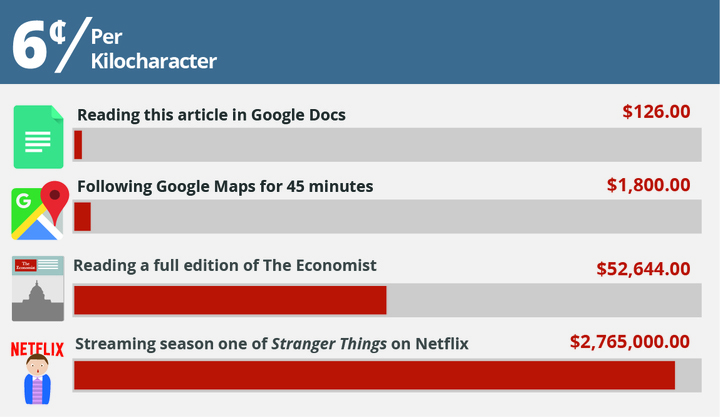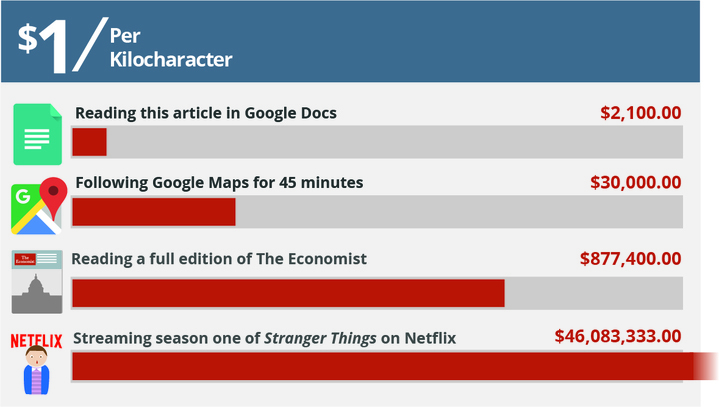Editor’s Note: Jeremy Hanks is the CEO of Dsco
Retailers constantly look at data to provide the best customer experience possible. What are the out-of-stock rates? How well is a product selling? When are the peak shopping times online? Data is essential. It's the nucleus of every modern shopping experience and yet it often comes at a pretty price. As old fashioned as it may sound in 2017, a large number of retailers and suppliers still pay hefty fees to share data with their trading partners.
Let's take a step back and think about data. Our day-to-day use of data is a seamless experience, but imagine what it'd be like if you could only communicate for free with someone who had the same cell phone, plan, and wireless carrier as you. If you wanted to talk with a friend who had a different cell phone or network, you'd have to pay a large data fee. Luckily, data is easily and instantly translated allowing us to interact with anyone—regardless of the kind of phone they have.
Oddly enough, the same can't be said for the ecommerce industry. Vital documents like shipment notifications, purchase orders, and invoices, can only be shared for free between retailers and suppliers when it's in the same standard format (e.g. EDIFACT, XML, ANSI). In order for that to happen, trading partners turn to Electronic Data Interchange (EDI) technology which is the computer-to-computer exchange of business documents in a standard electronic format between partners.
Remember when I said data comes with a pretty price? Billing is often based on a kilocharacter, which is a unit of one thousand characters. The standard charge per kilocharacter can run anywhere from three cents to up to one dollar depending on various factors. Within every document, every single space is one character—so those kilocharacters can add up, fast.
To put this in context, I've calculated the kilo character cost of various everyday data-intensive activities. Even using a lower end fee of 6 cents per kilocharacter, the price tag of such activities are mind-blowing:

Just for fun, let’s look at how much it would cost someone to do the same things but based on a larger fee of one dollar per kilocharacter (believe it or not, I've actually heard such inflated fees quoted for smaller business that don't have as much leverage as larger retailers or brands):

There's no other way to put it: these fees are insane.
Measuring data in kilobytes is archaic, no one does it. However, charging for kilocharacters in the ecommerce industry is commonplace and no one questions this practice because they mistakenly think there aren't any alternatives.
As more and more retailers enter the 21st century digital space (e.g.: Macy's recently announcing its plans to expand its ecommerce efforts) they need to be aware of these common data transfer fees for a few reasons:
- A major cause of inventory distortion stems from communication challenges among trading partners. Communication challenges are exacerbated when retailers and suppliers minimize the sharing of real time inventory data and shipment notifications in order to avoid spending thousands of dollars every year on data transfer fees. I know many suppliers who only send inventory updates once a day for this very reason.
- Kilocharacter fees inevitably lead retailers to rely on inaccurate and outdated information in the name of cost savings. This not only erodes the trust that information is correct, but also leads to poor customer service—consumers shouldn't receive messages from retailers saying their order is unable to be fulfilled because a product is actually out of stock.
- Finally, kilocharacter fees are just plain expensive for drop shippers. Compared with traditional methods that may only require inventory and shipment updates once a day, drop shipping requires a constant flow of accurate real-time information on thousands of data points in order to keep customer orders timely, accurate, and cancel-free. To put it simply, drop shippers who pay for kilocharacters are getting burned.
In order to have a successful and profitable ecommerce ecosystem, there needs to be a free flow of trusted and accurate information and a process that doesn’t cost retailers and suppliers millions to update their data.
The industry needs a vision for new-age commerce, including a simplified, standardized, and modernized data exchange solution for brands and suppliers. Is it possible? Absolutely . . . We do it every time we make a call on our cell phones or stream a show on Netflix.
What makes ecommerce data any different?
SC
MR


Latest Supply Chain News
- AI, virtual reality is bringing experiential learning into the modern age
- Humanoid robots’ place in an intralogistics smart robot strategy
- Tips for CIOs to overcome technology talent acquisition troubles
- There is still work to do to achieve supply chain stability
- Blooming success: The vital role of S&OE in nurturing global supply chains
- More News
Latest Resources

 Explore
Explore
Topics
Latest Supply Chain News
- AI, virtual reality is bringing experiential learning into the modern age
- Humanoid robots’ place in an intralogistics smart robot strategy
- Tips for CIOs to overcome technology talent acquisition troubles
- There is still work to do to achieve supply chain stability
- Blooming success: The vital role of S&OE in nurturing global supply chains
- Supply chain salaries, job satisfaction on the rise
- More latest news
Latest Resources

Subscribe

Supply Chain Management Review delivers the best industry content.

Editors’ Picks




